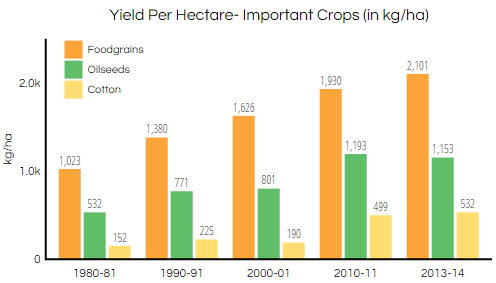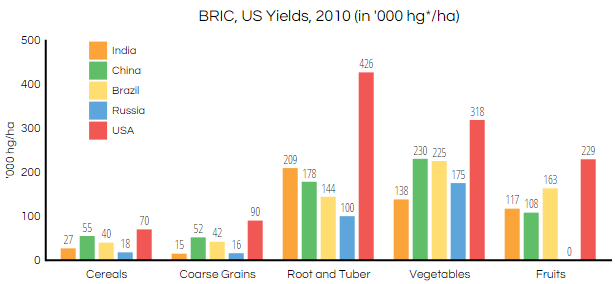

Cultivated land on India’s farms has declined 15% over 25 years, according to government data analysed by IndiaSpend, reducing foodgrain production and portending new pressures as more land is set to be acquired for industries.

While net sown area includes orchards and crops, cultivated area covers only crops. Land sown with crops declined from nearly 87% in 1987-88 to 72% in 2011-12.
IndiaSpend’s recent reports have been focusing on the farm crisis in India with case studies of Bundelkhand farmers. We have also reported on the decline in farmers across India.
The Bharatiya Janata Party (BJP)-led government at the centre is trying to push through a controversial land acquisition act, and that might reduce the land available for farming.
The most controversial change proposed in the new act is the exemption of five categories of projects—industrial corridors, public-private partnership projects, rural infrastructure, public housing and defence projects—from getting the consent of 70% farmers of the area.
Reasons for the decline in cultivated land include a drop in households owning land in rural India and a decline in the proportion of households dependent on manual labour and farming, according to a study by the Foundation for Agrarian Studies, using data from the National Sample Survey Organisation (NSSO), an organisation run by the Ministry of Statistics and Programme Implementation.
To analyse how the drop in cultivated area has affected India’s food sufficiency, we matched the availability of foodgrains (cereals and pulses) to the decrease in cultivated land. The decline is clear:

Source: Economic Survey 2014-15
Key problems with agriculture in India are related to low yields and production, asIndiaSpend has previously reported.Foodgrain availability has declined from 471.8 grams per capita to 453.6 grams per capita over the last four decades.Let us now look at another angle: yield, which has been improving over the decades.

Source: Economic Survey 2014-15
So, foodgrain yield has almost doubled between 1980-81 and 2013-14 while oilseeds and cotton have also witnessed 116% and 250% rise in yields respectively.Despite its fluctuating farm fortunes, India is among world’s top producers of food crops, according to UN’s Food and Agriculture Organization (FAO).
| Crop | Rank in world in production | Rank in yield among top 5 producers |
|---|---|---|
| Cereals | 3rd | 5th |
| Coarse grains | 4th | 5th |
| Root and tuber | 3rd | 1st |
| Vegetable | 2nd | 5th |
| Fruits | 2nd | 4th |
Source: FAO Statistical Yearbook 2013
While India figures among the top producers, yields across agricultural products are low, as these data show:



















